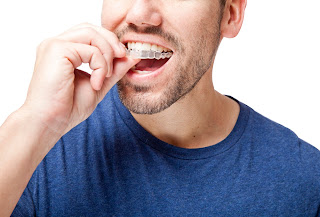Everything You Need to Know About Underbites
When it comes to
achieving and maintaining a beautiful smile, some people have more difficulty
than others, especially those growing up with an orthodontic issue. In the
past, getting rid of an underbite was a tedious task. But with incredible
developments in dentistry, such problems can be easily corrected, giving about
10 percent of the American population born with an inherited underbite the
opportunity to achieve a beautiful smile.
So, What is an Underbite?
A true underbite
occurs when the upper front teeth are set behind the lower teeth, and the lower
jaw is bigger than the upper one.
Clinically referred to
as prognathism, the severity of the malocclusion or “bad bite” can vary between
a mild, almost non-intrusive underbite – where the overlap between the two sets
of teeth is minimal, and a severe situation wherein the gap is so wide that the
two rows of teeth cannot meet at all.
In the latter case, it
can give the impression that you are expressing an emotion that is not intended
(with the lower lip pushed forward), creating a common social issue that many
would prefer to rectify.
Complications of an Underbite
An underbite is a
hereditary condition characterized by a misaligned lower jaw that is already
present at birth, though the US National Library of Medicine suggests that the
condition can also develop from conditions like acromegaly or gigantism.
The problems resulting
from an underbite depend on the extent of the misalignment. Children and adults
with a wide gap may have:
· Challenges with speaking
· Eating difficulties
· Chronic jaw or joint pain (TMJ)
· Head and ear aches
· Excessive wear of tooth enamel resulting in tooth decay
· Chronic mouth breathing, bacterial infections, and halitosis
· Sleep apnea, snoring and other
sleep breathing disorders
Besides these,
children with an underbite can face judgment and discrimination from
classmates. So, it is important that parents try to find solutions as early as
possible.
Correcting an Underbite
There are a number of
methods for correcting an underbite, from the use of orthodontic appliances to
jaw surgery. Usually appliances are recommended when the patient is young, from
the age of 7 years, with the most common corrective appliances being:
· The “reverse-pull” face mask – it looks like braces headgear, since it
wraps around the child’s heat, with metal bands attached to the upper back
teeth in order to pull the upper jaw outwards, and into position.
· An upper jaw expander – a wire-frame device that is fitted across the
patient’s palate. The expander is widened every night by a small amount every
night – using a special key – causing the upper jaw to widen enough to meet the
lower teeth. It is usually worn for one year and then replaced with a retainer.
Orthognathic surgery
is only used in extreme cases or older patients, whereby the lower jaw is
repositioned further back, together with the teeth. Alternatively, patients can
opt for a facelift procedure to make the condition less noticeable and improve
jaw functionality.
Your orthodontist in Newport Beach helps patients correct their underbites, as well as other malocclusions.
Labels: malocclusion, Orthodontist Newport Beach, underbite complications, underbite correction





